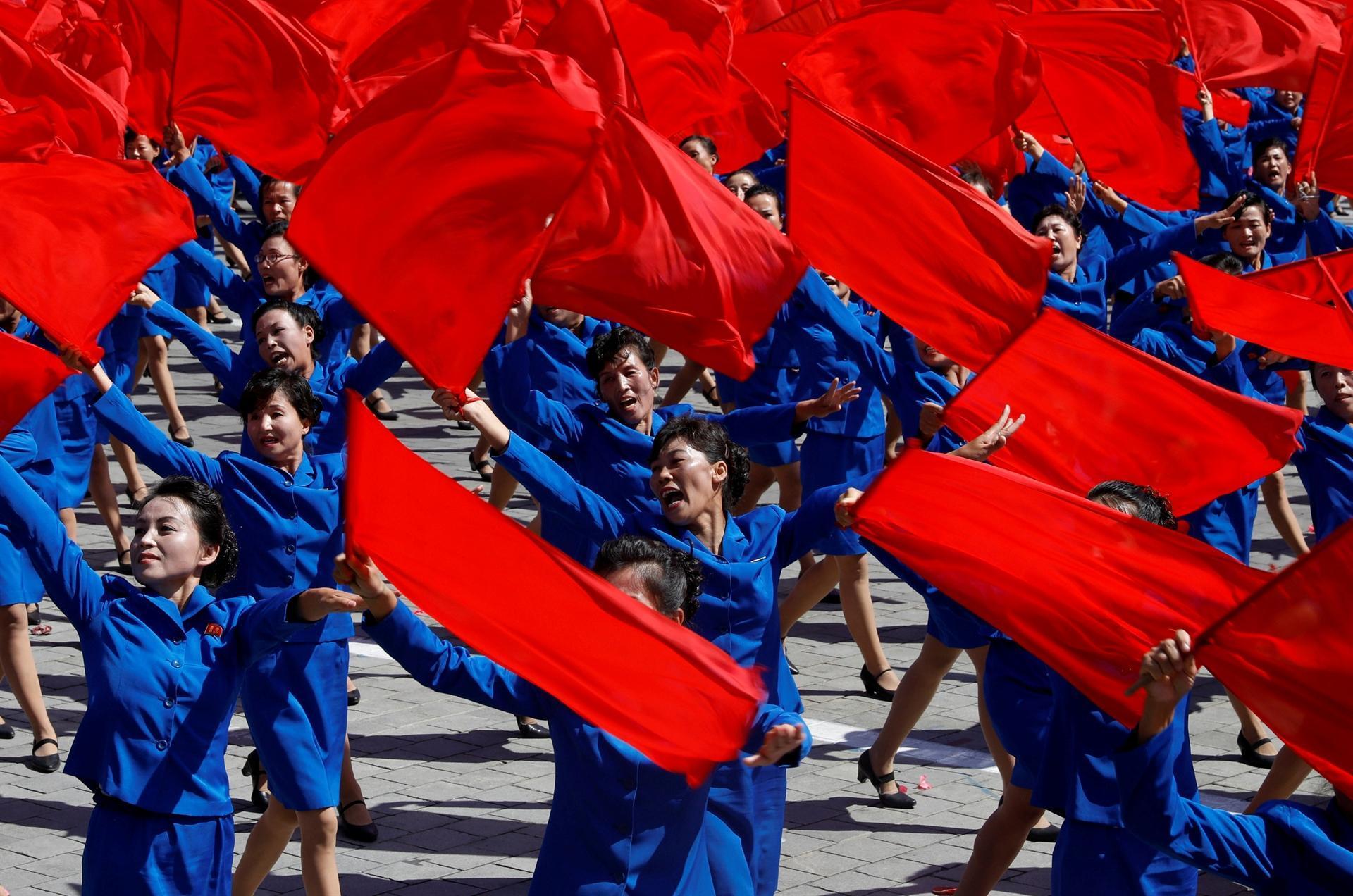
Thousands of North Korean troops followed by artillery and tanks paraded through Pyongyang on Sept. 9, as the nuclear-armed country celebrated its 70th birthday, but it refrained from displaying the intercontinental ballistic missiles that have seen it hit with sanctions.
Instead leader Kim Jong Un showed off his friendship with China, raising the hand of President Xi Jinping’s envoy as they saluted the crowd together afterwards.
The Democratic People’s Republic of Korea (DPRK), as the North is officially known, was proclaimed on Sept. 9, 1948, three years after Moscow and Washington divided the peninsula between them in the closing days of World War II.
Such set-piece dates are a mainstay of the North’s political calendar, and have for years been opportunities to demonstrate progress in its quest for a missile capable of delivering a nuclear warhead to the United States. But too militaristic a display this time might have risked upsetting the recent diplomatic dalliance on the peninsula, after Kim’s Singapore meeting with U.S. President Donald Trump in June and his third summit with the South’s President Moon Jae-in due in Pyongyang later this month.
After a 21-gun salute, dozens of infantry units marched through Kim Il Sung Square, some in night-vision goggles or wielding rocket-propelled grenade launchers, as the current leader -- the founder’s grandson -- looked on from a rostrum.
Li Zhanshu, one of the seven members of the Chinese Communist party’s Politburo Standing Committee, the country’s most powerful body, sat next to him, the two of them occasionally exchanging comments.
Armored personnel carriers, multiple rocket launchers and tanks followed, with biplanes flying overhead in a ‘70’ formation. At one point jets trailing red, white and blue smoke -- the colors of the North Korean flag -- roared above the Juche Tower, the stone monument to Kim Il Sung’s political philosophy.
Finally came the missiles, the traditional climax of the parades. But the only ones on show were short-range battlefield devices, the Kumsong-3 anti-ship cruise missile, and the Pongae-5 surface-to-air weapon.
There was no sign of the Hwasong-14 and -15 rockets that can reach the mainland United States and changed the strategic balance when they were first tested last year.
“It looks like the North Koreans really tried to tone down the military nature of this,” said Chad O’Carroll, managing director of Korea Risk Group.
Any display of longer-range missiles would have cast doubt on North Korea’s commitment to denuclearization, he added.
Pyongyang has not publicly stated a willingness to give up the weapons it has spent decades developing at huge political and financial cost, but it has been on a diplomatic charm offensive for months.
In April, Kim declared that the North’s nuclear program had been successfully completed and “socialist economic construction” was the new strategic priority.
In a speech, ceremonial president Kim Yong Nam lauded the country and its army as “the strongest in the world,” but did not mention nuclear weapons.
And immediately after the parade thousands of citizens rallied through the square, alongside floats displaying economic themes and calls for Korean reunification.